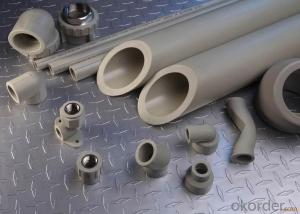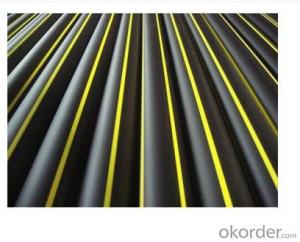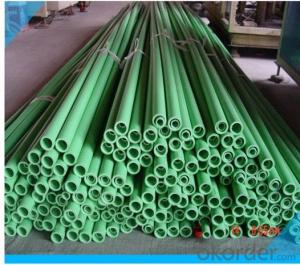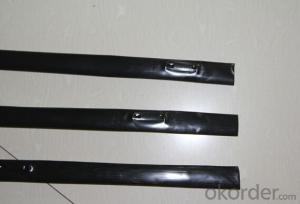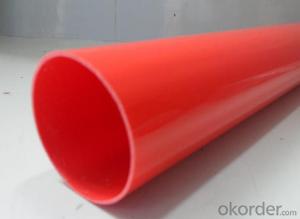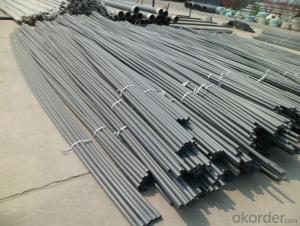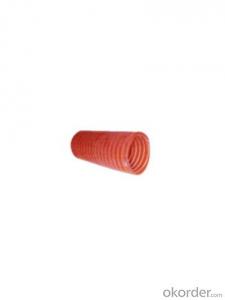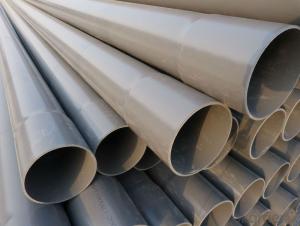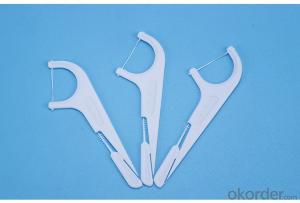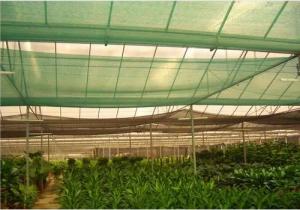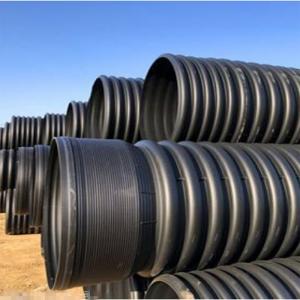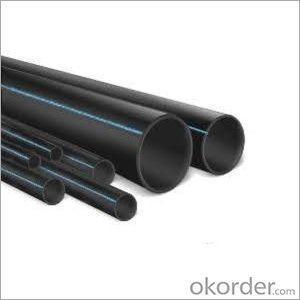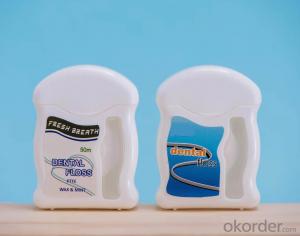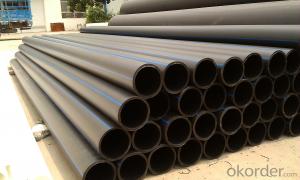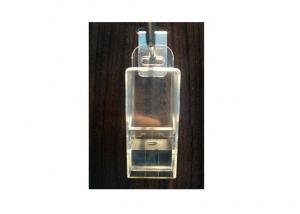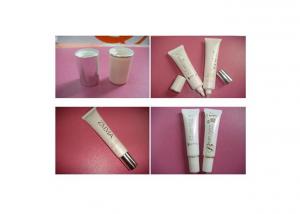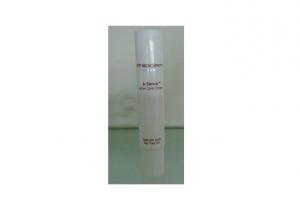PVC Pipe 16 to 630mm Specification:16-630mm Length: 5.8/11.8M Standard: GB
- Loading Port:
- China main port
- Payment Terms:
- TT OR LC
- Min Order Qty:
- 100 m
- Supply Capability:
- 10000 m/month
OKorder Service Pledge
OKorder Financial Service
You Might Also Like
1.Description of PVC Pipe :
Material: Virgin Rigid PVC resin, no recycle material
Process: vacuum forming extrusion
Color: various colors, we can make color according to Panton card No.
Quality Standard: Smooth surface, no spot, no shrink mark, no surface quality defect.Check from cross section, homogeneous in density, good plasticizing degree, relative chemical/physical property meet customer requirement. We supply different environment protection products to meet different market requirement.
2.Features of PVC Pipes :
1) Light weight, easy to load and unload: PVC pipe is very light, convenient to handle loading unloading, and installing.
2) Small resistance to fluidity: The smooth surface reduces resistance to the fluids. Its roughness coefficient is only 0.009, much less than other pipes, Under same discharges, smaller cabibre of the pipe can be uesd.
3) Strong mechanical strength: Good resistance to water pressure, outside impact and pressure, is satisfied under any conditions.
4) Good electrical insulation: excellent insulation nature against electricity. the pvc pipe can be served as conduits and pipes in construction cable and wire.
3.PVC Pipe Images:
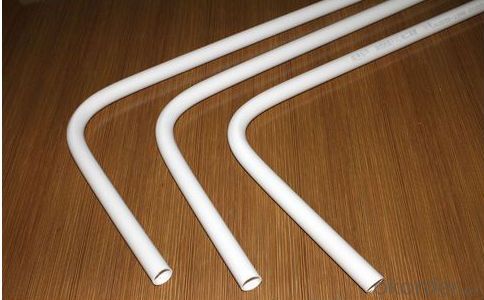
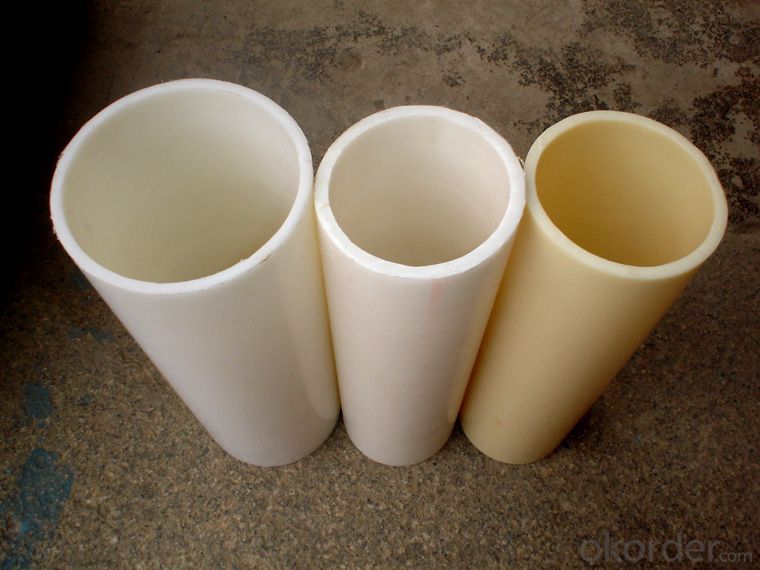
4.Specifications of the PVC Pipe:
1) Material: pvc pipe unplasticized polyvinyl chloride
2) Standard: GB, ISO9001, ISO14001
3) Color: white pvc pipe, grey pvc pipe , etc.
4) Specific Gravity:g/cm3, 20(C): 1.35 - 1.55
5) Vicat Softening Temperature: (C) >=79
7) Falling Weight Impact Test: TIR, %, 0(C) <=10< span=""><>
8) Tensile Yield Strength: Mpa >=40
5.FAQ
Q:What is you MOQ?
A:As customer’s request.
Q:What is the production ability? or delivery time?
A:Our production ability support 40HQ order finish in one week.
Q:What is the regular shipping port?
A:Tianjin or Shanghai.
Q:What is your payment?
A:TT or CC.
Q:Can we have sample?
A:Sample free, freight cost you.
Q:For urgently doubts,who online?
A:Sales and marketing Manager 24hours online service.
- Q:Can plastic tubes be used for pool equipment?
- Yes, plastic tubes can be used for pool equipment.
- Q:Can plastic tubes be used for storing powders or granules?
- Yes, plastic tubes can be used for storing powders or granules. They are commonly used in various industries such as pharmaceutical, food, and chemical, as they provide a convenient and hygienic storage solution. Plastic tubes offer good barrier properties, protecting the contents from moisture and external contaminants. Additionally, they are lightweight, easy to handle, and can be sealed tightly to ensure the integrity of the stored powders or granules.
- Q:how long would it take for air inside a plastic tube 3inch by 1inch to go stale?
- What do you mean by go stale? Smell bad? Become contaminated with organics from the tube? I would think you would also need to specify what kind of plastic that makes the tube to have a chance to answer this.
- Q:how do you get 2 pieces of plastic tube unstuck?
- Are they PVC? Is there a joint or fitting over them (a bigger piece of PVC that both tubes fit into)? Did someone else assemble it (or did you assemble it with a PVC glue)? If you answered yes to all three of these, you are in trouble. PVC is often assembled with glues which can be very difficult or impossible to undo. It is often easier to just cut the PVC and then extend it with a new joint.
- Q:How many kinds of plastic pipe material are there?
- Thermoplastics pipes: polyethylene pipe (polyethylene pipe, polyethylene gas pipe, polyethylene pipe, polyethylene structure wall with irrigation drainage, polyethylene pipe, communication PERT geothermal heating pipe, medical infusion tube such as polyethylene polypropylene pipe (PPR); hot and cold water pipe, MPP power cable protection sleeve); polyvinyl chloride (PVC) pipes (UPVC pipe, UPVC drainage pipe, UPVC pipe, UPVC pipe, electric power communication UPVC bushing, UPVC corrugated pipe, PVC pipe, PVC soft medical infusion tube); ABS pipe (ABS pipe, ABS pipe chemical); chlorinated polyvinyl chloride (CPVC) pipe (tube with hot and cold water, CPVC CPVC, industry) nylon tube (PA tube), polybutene (PB) pipe.
- Q:would this exhibit electromagnetism just like a copper wire solenoid? Could it actually be even more efficient than a copper wire solenoid?
- It would be a lot less efficient, as the resistance would be higher than copper. A lot higher. And then you have the problem of electrolysis occurring where the wire connects to the salt water. Silver has a lower resistivity than copper, so it would have a higher efficiency, that is about the only conductor better than copper. .
- Q:Can plastic tubes be used for chemical processing?
- Yes, plastic tubes can be used for chemical processing. Plastic tubes made from chemical-resistant materials such as polypropylene, polytetrafluoroethylene (PTFE), or PEEK (polyether ether ketone) can withstand the corrosive effects of many chemicals. They are commonly used in various chemical processing applications for efficient fluid transfer, sample collection, and transportation of chemicals. However, it is essential to select the appropriate plastic material based on the specific chemical compatibility requirements to ensure safe and effective chemical processing.
- Q:Are plastic tubes easy to install?
- Yes, plastic tubes are relatively easy to install as they are lightweight, flexible, and can be easily cut and connected using various fittings or connectors. Additionally, they do not require any specialized tools or expertise for installation.
- Q:what is dialysis tubing? how can it be used to demonstrate osmosis?
- Dialysis tubing is actually a semi-permeable membrane when used in water. Experiments illustrating osmosis and pressure gradients across a membrane use dialysis tubing. This tubing usually comes in rolls and when wet, will open up into a cylindrical tube that can be tied off at the ends. The tubing can also be fitted over a thistle tube for such experiments. Dialysis tubing is literally a semi-permeable sheet of plastic. [Like a cell membrane, it can allow certain things in, but not everything.] In a dialysis tubing experiment, one fills the inside of the sheet with a concentrated liquid of some sort and then seals off the open ends of the tube. Then, one places the tube and liquid into another type of liquid and after awhile, the liquid from the outside moves inside the tube. What I did for my first dialysis tubing experiment was filling the inside of the tube with a concentrated starch solution and placed the tubing into a beaker of Lugol's solution diluted with distilled water. After a 1/2 hr, some of the Lugol's and distilled water will have entered the dialysis tubing. One can see that osmosis has happened because the Lugol's in the tube would have turned blue when in contact with the starch. Osmosis caused the diluted/unconcentrated solution of Lugol's and dH2O to go through the semi permeable membrane and into the concentrated solution of starch. Like a cell's membrane, if the outside of the cell is more concentrated, the cell would lose water because the the water will leave the cell and go for the concentrated outside environment. If the inside of the cell was more concentrated than the outside, the outside water will go into the cell through the semipermeable membrane.
- Q:Can plastic tubes be used for storing flammable substances?
- No, plastic tubes should not be used for storing flammable substances as they pose a higher risk of fire or explosion due to their low heat resistance and potential for chemical reactions.
1. Manufacturer Overview |
|
|---|---|
| Location | |
| Year Established | |
| Annual Output Value | |
| Main Markets | |
| Company Certifications | |
2. Manufacturer Certificates |
|
|---|---|
| a) Certification Name | |
| Range | |
| Reference | |
| Validity Period | |
3. Manufacturer Capability |
|
|---|---|
| a)Trade Capacity | |
| Nearest Port | |
| Export Percentage | |
| No.of Employees in Trade Department | |
| Language Spoken: | |
| b)Factory Information | |
| Factory Size: | |
| No. of Production Lines | |
| Contract Manufacturing | |
| Product Price Range | |
Send your message to us
PVC Pipe 16 to 630mm Specification:16-630mm Length: 5.8/11.8M Standard: GB
- Loading Port:
- China main port
- Payment Terms:
- TT OR LC
- Min Order Qty:
- 100 m
- Supply Capability:
- 10000 m/month
OKorder Service Pledge
OKorder Financial Service
Similar products
New products
Hot products
Related keywords



